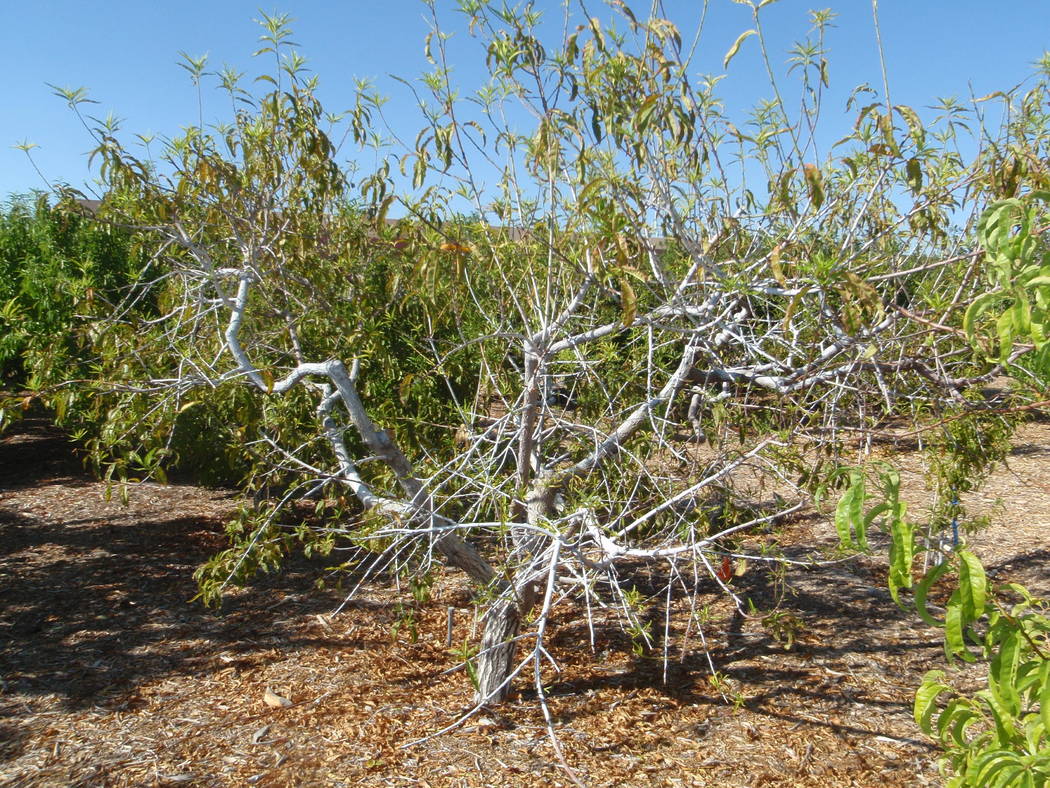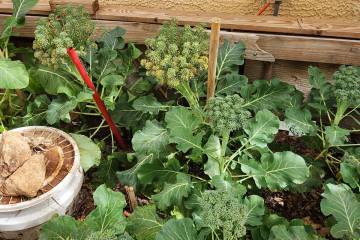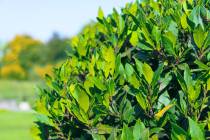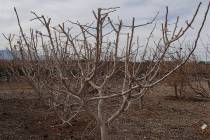Heat, borers plague landscapes over summer
Two major problems occurred to landscape plants and fruit trees these past few weeks during the summer. First was the heat. They were stressed. High temperatures seemed to linger longer than normal. In addition, minimum nighttime temperatures stayed elevated well into the 90s for more days than I remember in the past.
The second problem involved borers, mostly in fruit trees. Maybe more fruit trees have been planted, and there are now more borers than in the past. But I received many questions regarding tree decline, branches dying on mostly fruit trees and possible borer damage during July and August.
This year, I saw more sun damage to trees and grapes due to intense sunlight and high temperatures than I have seen in the past. Right now, in late August with cooling temperatures, they are starting to recover. I can see signs of new growth and this new growth looks healthy. That’s after a temperature drop of 10 degrees during the day and 5 to 7 degrees at night.
As I mentioned to someone in early July, we just need to get sensitive plants through the high temperatures of the summer. Not a problem with desert and desert-adapted plants.
With fruit trees, I had to add an extra day of watering when temperatures were consistently above 110 degrees. If damaged plants are not sensitive to winter cold, give younger trees an application of fertilizer in about three to four weeks after temperatures cool off.
Borers start causing damage in April but are difficult to discover because they are hidden inside plants. Nothing is obvious to the human eye even though internal damage to the plants is occurring. Sometimes, sap is seen from infested limbs or the trunk, particularly after a rain or the tree is wetted.
Plants can handle quite a bit of internal damage by borers before they start showing it. The appearance of borer damage is the death of a limb or two, usually during the heat of summer.
Q: I have tree sap coming from the trunk of my flowering plum tree. The top looks healthy, but I’m concerned the tree might have borers.
A: Plums are sappy trees. They exude a lot of sap from the trunk and limbs because of some sort of damage. The damage can be from high-temperature stress, sunburn, wounds and borer activity just under its outer surface.
But in midsummer, this damage is likely to be from borers. The next stage in damage to your tree is the death of a limb or two because the borers cut off the water supply from the roots. When damage is excessive in the trunk it can cause the entire tree to die quickly.
Remember this as a lesson learned. The borers were attracted to the tree because of damage from intense sunlight, sunburn, on the trunk. Select trees that have lower limbs and don’t be so quick to remove them.
Maintain the tree full of leaves and keep the lower limbs on the tree to shade as much of the trunk as possible. Fruit tree trunks and exposed lower limbs are painted with dilute white latex paint to reduce the sunburn which attracts borers.
When damage from borers to the trunk is light, sap is seen coming from damaged areas of plums but with no damage to the top of the tree. The larger trunks can handle more internal damage than single limbs before damage to the top is seen. The only way to know for sure is to take a sharp, sanitized knife, remove a layer of bark where the sap is located and look for damage.
I’m 90 percent sure the damage is from borers because of the sap and the time of year. Use the Bayer Tree and Shrub insect control product as a soil drench to kill any remaining borers. If the borers are killed now, it is possible the tree may avoid further damage and recover. Wear rubber gloves to protect yourself.
Mix the amount specified on the label with water in a 5-gallon bucket and pour it on the soil around the tree about 12 to 24 inches from the trunk. Rinse the bucket three times with water and pour that rinsate on the soil as well.
After rinsing, use soap and water and gloves to clean the bucket. Wear waterproof gloves when doing all this. Death of borers should be within 24 to 48 hours.
Q: We moved into this house a few months ago, and the fruit trees look bad during this summer. What can I do?
A: Right now just keep your trees alive during the heat. They will start to recover as temperatures cool down in September and October. It’s hard to know why they are declining without seeing them.
Most damage I see now is because trees are not watered enough, or they are watered daily, or they are infected with borers. When watering, make sure fruit trees get plenty of water but give them at least one day without water before the next irrigation.
Give the roots a chance to breathe. Avoid giving them tiny sips of water daily. This type of watering can be hard to manage and suffocate tree roots.
If concerned about the amount of water they receive during irrigations, build basins under the canopy and supplement them weekly with a hose.
Build the basins 4 inches high and wide enough that they occupy at least half the area under the tree canopy. A bigger basin is better. Make sure the basins are level along the bottom as well as the top.
Fill basins once a week with a hose. Don’t turn off the irrigation to them, but use the hose to supplement the amount of water applied.
Plants growing by themselves, not surrounded by other plants receiving water, require more applied water. This is because they are surrounded by dry soil. Fruit trees are often grown by themselves.
When temperatures cool down, add more drip emitters to a wider area under the tree’s canopy. If watering with only a basin, fill the basin three times a week right now. Later in October, back off to twice a week.
If you see sap coming from the trunk or limbs, or single branches have died, use a systemic insecticide as a soil drench around the tree to kill any remaining borers. Follow label directions for applying a soil drench. Avoid using systemic insecticides before or during flowering to protect honeybees and other insects that might visit the tree for pollination.
Q: I have spurge taking over my planting beds and lawn. In most cases, we need to spot kill it as it is mixed in with other plants and grass. What is the most effective way to get rid of spurge?
A: Spurge is an annual weed that spreads out horizontally with tiny leaves and a white, milky sap when you break the thin stems. They are a nuisance more than anything else and relatively easy to control with a surface mulch that shades the soil.
They have tiny flowers along the thin stems that produce seed quickly. This seed is dropped on the soil where it will grow if the mother plant is removed and they receive sunlight. They have the potential to produce new plants every 30 days through the summer.
They become a problem where there is plenty of sunlight and frequent irrigation. Avoid watering daily when possible.
Shade the surface of the soil with a surface mulch 2 to 3 inches deep. If spurge invades a lawn, mow the grass taller and don’t let maintenance people weed whack grass growing near sprinkler heads or bevel cut the edge of the lawn to make it look nice.
These two maintenance practices invite invasion by Bermuda grass and spurge. Mowing the grass taller and fertilizing it four times a year helps prevent invasion by spurge by increasing the shade on the soil.
As far as chemicals go, any of the pre-emergent weed killers available to homeowners will work but prevention will keep this weed at bay. Pre-emergent week killers require applications about every six to eight weeks starting in about March. However, this weed is easy to control by making other plants more competitive and using surface mulch.
Bob Morris is a horticulture expert and professor emeritus of the University of Nevada, Las Vegas. Visit his blog at xtremehorticulture.blogspot.com. Send questions to Extremehort@aol.com.




























